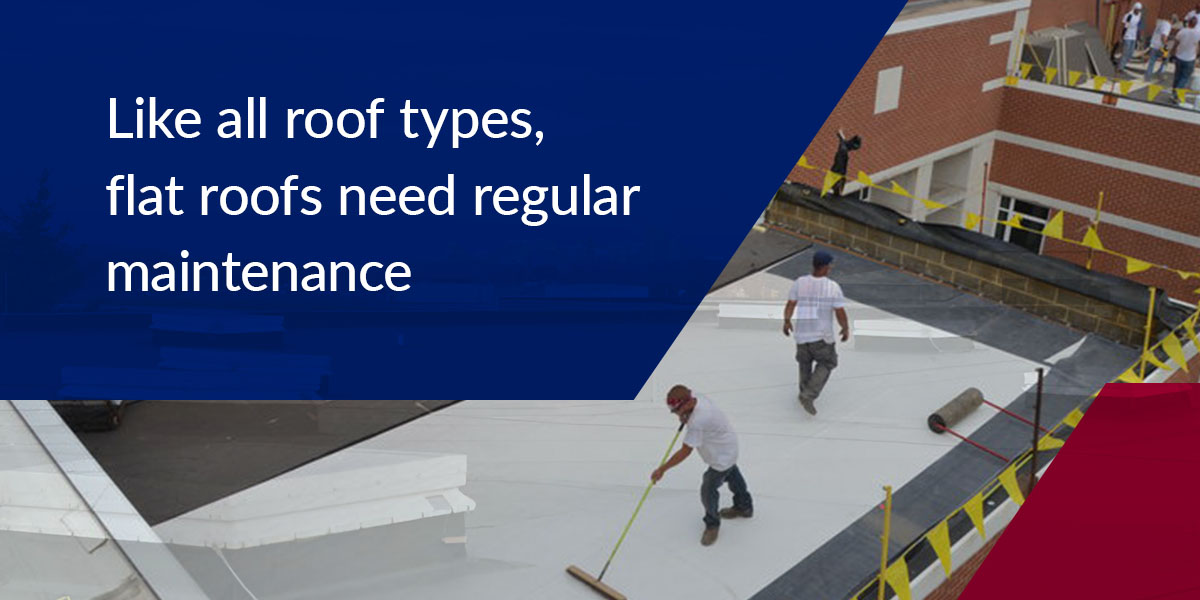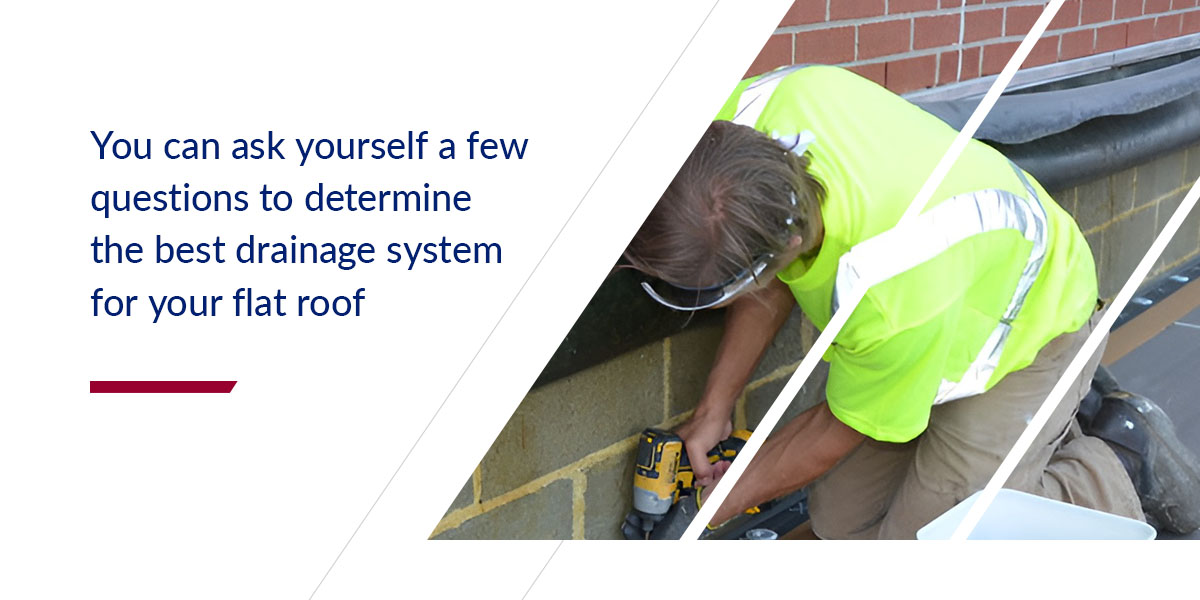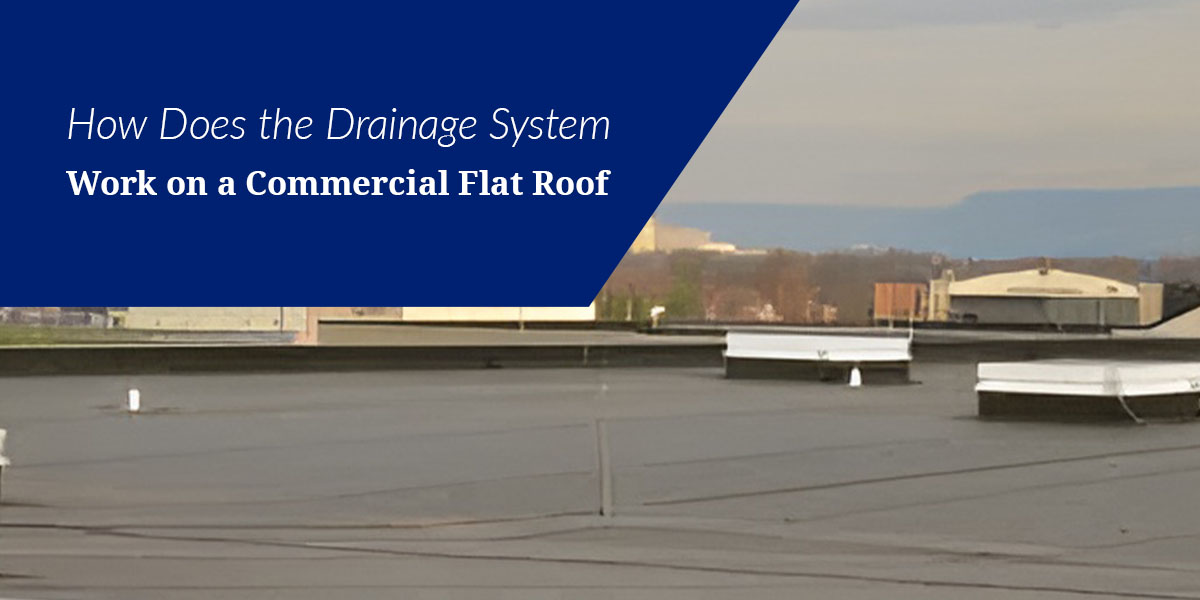Most roofs drain easily because they’re sloped. Gutter systems carry falling water away from the edge of the building, protecting the walls and foundation from standing water and erosion. However, many commercial buildings are covered with a flat roof that doesn’t allow water to drain off automatically.
Without a drainage system, commercial buildings can have standing water collect on their roofs. If the water accumulates and remains there long enough, it can damage the roofing membrane, cause leaks and even weaken the roof’s structural integrity.
Thankfully, you can choose from several effective drainage solutions for flat commercial roofs to find the best fit for your building. If you have standing water on your roof, don’t wait to take care of it — call a professional and install a new drainage solution.
The Importance of Flat Roof Drainage
Flat roofs are a good solution for many commercial buildings because they’re affordable, durable and energy efficient. In some cases, they can even provide additional storage space. They’re easy to maintain and easy to replace when the need arises.
However, there are some downsides to having a flat roof. Here are a few common issues you might experience after installing a flat roof:
- They can collect standing water.
- Debris like sticks and leaves can pile up.
- Damage from weather can cause leaking.
Like all roof types, flat roofs need regular maintenance. They must be routinely cleaned and checked for damage, which can lead to leaks. With the right maintenance plan, your flat roof can last and protect your facility for years.
One of the best things you can do for a flat roof is to install a proper drainage system. This will keep standing water off your roof, lengthening your roof’s lifetime and reducing the possibility of damage and leaks.

Types of Roof Drainage Systems
To get water off a flat roof, drainage uses gravity or a siphon system. There are three common types of commercial flat roof drains, and sometimes businesses combine them for the best result on their building. Here’s more about flat roof drainage systems:
Gutter Systems
On its own, a gutter system can’t do much about standing water if the roof is perfectly level. However, most roofs aren’t completely level, and most of the water will move to one side or another of your building.
Gutters then direct water overflow away from your building’s walls and foundations, protecting your building as a whole. Gutter systems tend to be the most affordable of all flat roof drainage systems for the short term. If you observe standing water after installing a gutter system, you can add one of the other systems to improve your drainage.
When you work with a professional, they can help you determine water flow and whether a gutter system should be sufficient to drain your commercial flat roof. If the edge of the roof is significantly higher than the middle, a gutter system probably isn’t the best option for you.
Scupper Systems
Scuppers are often connected to downpipes like a gutter system. However, they’re designed to collect water from lower areas of your roof and direct it away from the building without additional pipes or gutters.
If you live in an area where gutters tend to freeze and experience ice damage, a scupper system might be a better fit. To work well, scuppers must be strategically placed so any standing water has an immediate outlet. You must also consider where to direct the drained water once it hits the ground.
Some scuppers look like small pipe openings along the edge of your roof, while others may be wide and broad to allow for constant low drainage. The best option for your building depends on the local weather and how much water you’ll need to drain from your roof.
Installing scuppers is typically more expensive than a gutter system since you’ll need a professional to cut away layers of the roof and install new waterproofing materials. However, scuppers can extend the life of your roof and are an excellent solution for standing water on flat roofs.

Interior Drain Systems
Interior drain systems are another option to consider for flat roof drain installation. This type of drainage system involves cutting a drain hole in the roof wherever water builds up over time. A strainer is placed on top to keep leaves and other debris out of the drain.
Inside the building, the drain is attached to pipes that guide water away and out of the building. Because the piping is all inside your building, it’s easy to keep warm in the winter, and you can avoid dealing with frozen pipes.
However, the strainer in this system may eventually become clogged with debris, causing standing water to build up again. If enough water accumulates, it can get underneath the flashing on the edge of your roof and cause internal leaking and damage.
Some professionals suggest building a basin or sump for each interior drain opening to prevent this. That way, if some water does build up before you clear the strainer, your roof is protected from damage.
How to Choose the Best Drainage System for Your Flat Roof
You can ask yourself a few questions to determine the best drainage system for your flat roof. Sometimes, a combination of options is best. It all depends on your specific situation, weather conditions and drainage needs.
Here are some things to consider when deciding how to drain a flat roof:
- How large is your roof?
- Does it gather standing water, or does the water roll off the roof?
- How much standing water are you seeing?
- What drainage systems do you already have in place?
- What is your drainage system budget like?
Calling a professional for expert advice can be the best way to determine the right solution. If you’re concerned about getting an unbiased opinion, consider contacting several different companies. That way, you can compare rates and decide who seems most trustworthy and knowledgeable.
Contact David Maines for All Your Commercial Flat Roof Drainage Needs
Looking for roofing services in the Mid-Atlantic area? David Maines & Associates, Inc. serves Pennsylvania, Maryland and surrounding areas with roof replacement, restoration, repair and maintenance services. We also offer clients support with commercial masonry, wall panels and waterproofing.
At David Maines, we’re committed to providing the best recommendations, the highest-quality service and open communication. Customers love working with us because we’re professional, organized and true to our word.
All our materials come from proven manufacturers, and we offer warranties on all our installations. If you’re looking for a roofing contractor you can trust, reach out to us!
Share
